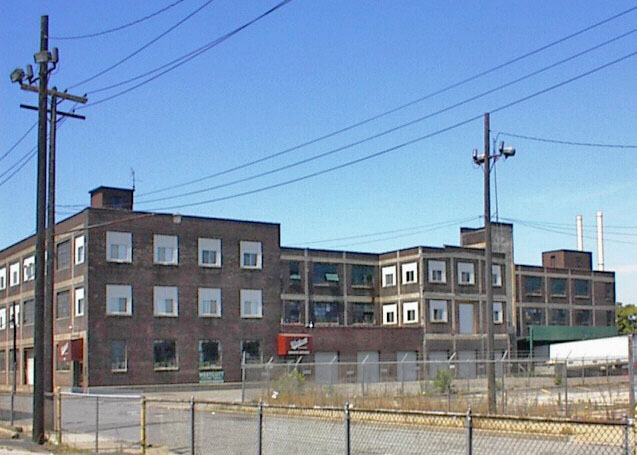

The area within a radius of three miles of the intersection of Woodward and Grand Boulevard in Detroit bears the same relationship to the modern vehicle industry as that the Garden of Eden bears to the human race, at least in terms of those who accept the beliefs of the Abrahamic faiths. Three historic districts have been designated while many other buildings significant to the history of the auto industry are listed on the state or federal historical registers or both. In the Piquette Avenue Industrial District, you find the National Historic Landmark building where Henry Ford first successfully produced cars and then designed, in 1909, and initiated production of the Model T. In the New Center Historic District, you find two National Historic Landmarks linked to the vehicle industry—the massive General Motors Headquarters or Durant Building erected in the early 1920s, just after GM first surpassed Ford in sales. Across Grand Boulevard from the GM Building is the Fisher Tower, once of the nation’s greatest Art Deco structures reflecting the wealth that the Fisher Brothers amassed building bodies for General Motors. To the west along Woodward, you find Henry Ford’s Highland Park plant where he perfected use of the production lines. Thanks to that innovative reordering of how industrial production was accomplished, by the mid 1920s, Ford was able to build and ship 9,000 Model T’s every working day. And the complex of plants that Walter Chrysler merged into the Chrysler Corporation in the late 1920s was almost contiguous to the Ford Highland Park plant.
The New Amsterdam Historic District has, arguably, no one factory as significant as the buildings mentioned above. But it was a key location for the industrial developments that made Detroit the Motor City. Henry Ford’s second attempt to form an auto firm ran into financial difficulties. This was known as the Ford Auto Company and was founded in the late 1890s. But by 1902 the bankers who invested in Ford’s firm became very concerned. Some thought that Ford was more interested in building race cars than in protecting their investment. By 1902, the bankers who, in essence, owned the firm and doubted Ford’s capabilities, asked Henry Leland to evaluate the Ford Auto Company. Leland, a machinist from Massachusetts, had been in Detroit for about a decade where he built a tremendous reputation for the contributions he made to the development of efficient and durable gasoline engines.
Leland’s assessment was positive so the bankers removed Henry Ford and put Henry Leland in charge. He promptly had a plant erected at the corner of Amsterdam and Cass, designed a new car that used an engine he designed and began successfully producing cars in quantity. He borrowed the name of the Frenchman who founded Detroit, Cadillac. Leland’s was the second successful effort to produce cars in rather large numbers, at least large numbers by the standards of that era. Using three shifts, Leland produced 40 Cadillacs every day. Ransom E. Olds, with a factory on East Jefferson, also succeeded in turning cars in large numbers.. However, the plant Leland had built at Cass and Amsterdam for Cadillac production burned to the ground on April 14, 1904 when a cap blew off a riveting machine and ignited oil embedded in the oak floors. Since his business was very profitable, Leland asked George Mason to rapidly construct a new plant. This is the brick building that now stands at 450 Amsterdam in the New Amsterdam Historic District. Apparently there were not too many environmental requirements in 1904 and, perhaps, the city and state agencies granting permits could do so with stupendous alacrity since George Mason was also to complete the building that you see in the New Amsterdam Historic district in just 67 days. Cadillacs were produced at this location until the firm opened its very much larger Clark Avenue plant in about 1916.
At one point, the New Amsterdam Historic District included at least 23 building. Wayne State University, in the 1990s, sought to establish a Research and Technology Park in this area. This Detroit business incubator opened in 2004. General Motors donated the Chevrolet Creative Services Building, designed by Albert Kahn in 1927 to Wayne State for Techtown and, in 2007, the Kresge Foundation donated 1.5 million dollars for building renovations. The Techtown administration provides start-up support for firms that wish to capitalize upon opportunities linked to the University and locate in this area that is favorably located near or between Wayne State, Detroit’s Cultural Center and the prospering New Center District with the new campus of the College for Creative Studies. Quite a few of New Amsterdam Historic District buildings have been or will be renovated for use in this research and technology park Others have been razed.
A list of the buildings standing in 2010 is shown below:
Amsterdam Street |
|
| 450 | Cadillac Assembly Plant (George Mason, 1905) |
Burroughs Street |
|
| 41-47 | Graphics Arts Building (1936, Murphy and Burns) |
| 440 | A. Richards Oakland Service Department/ Jerry McCarthy Chevrolet Dealership (1927, Albert Kahn) |
| Cass Avenue | |
| 5911-5919 | Carney-Labadie Building |
| 6001 | Cadillac Sales and Service Building (1927, Albert Kahn) |
| 6050 | Stewart-Warner Speedometer Building (1925) |
| 6100 | Engine Company # 17 / Ladder Company #7 |
| 6110 | American Beauty Irons Building/American Electrical Heater Building (1922) |
| Second Avenue | |
| 6020 | Caille Brothers Building (Built between 1900 and 1930) |
| 6126 | Detroit Edison Amsterdam Substation (1929) |
| 6134 | Detroit Edison Substation (1929) |
State of Michigan Registry of Historic Sites: P 47, 597
National Register of Historic Places: #01000570 Listed May 30, 2001
Website for Wayne State University’s Techtown: http://techtownwsu.org/
Description prepared: October, 2010
Return to City of Detroit Historic Designations
Return to State of Michigan Historic Districts
Return to National Register of Historic Places Historic Districts
Return to Homepage